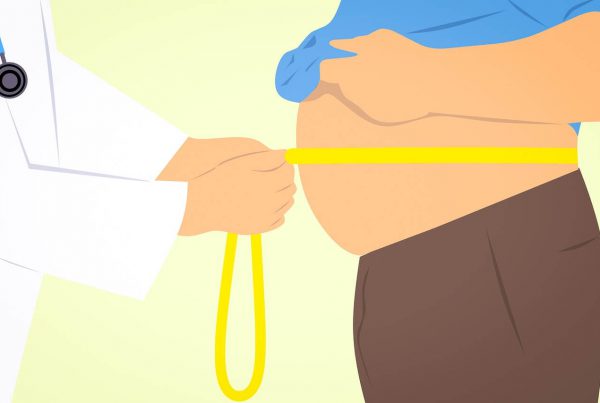Editor’s Note: This post was updated on October 1, 2018, for accuracy and comprehensiveness. It was originally published on April 20, 2016
by InBody USA
Do you know what your body fat percentage is, right now?
What range is considered ideal for your gender?
Or why you should even care?
Your body fat percentage is a value that tells you how much of your body weight is made up of fat. In terms of your overall health, your body fat percentage can be one of the most useful numbers available to you, more than how much you weigh and even more than your Body Mass Index (BMI).
You might argue that you can just rely on visual appearance, everyone knows what an overweight or obese person looks like. When you get to that point, you know you need to start making a change in your lifestyle. Unfortunately, once you get to the overweight/obese stage your risk for developing health complications will have increased and weight loss becomes difficult.
If you are interested in developing or maintaining a healthy and productive lifestyle, measuring and understanding your body fat percentage is incredibly important.
Here are three reasons why understanding your body fat percentage can positively impact your life.
#1 Get The Context Of Your Weight
Knowing how much you weigh tells you very little because two people can have the same weight but have completely different body compositions and health risks. Your body fat percentage (PBF) puts your weight into context, telling you far more about yourself than how heavy you are.
Here are the body compositions of three types of people, all around the same weight (~154 pounds) and height (5’10”). To make each of these easier to talk about later, we’ll give them each a fictitious name.

Bill has a body weight of 154.0 pounds and a PBF of 28.3%. Notice the large differences between the bar for Body Fat Mass (BFM) and SMM (Skeletal Muscle Mass). Because of this very large difference, Bill likely falls into the category of what is popularly called “skinny fat.”

Ted has a nearly identical weight to Bill – less than half a pound in difference – but has a PBF of 15.6%, almost 13% less than Bill! This is because, unlike Bill, Ted has average amounts of muscle and fat for a 5’10” person.

Within about a pound of both Bill and Ted is Brian, with a body weight of 154.8 and a PBF of 10.1%. The bars for his SMM and Body Fat Mass are the complete inverse of Bill, who had a skinny fat composition.
Now it’s true that even without these charts, it would be quite obvious to tell skinny fat Bill from athletic Brian just by looking at them.
However, the more extreme examples of Bill and Brian are helpful to illustrate how three individuals with roughly the same scale weight and BMI can have wildly different body compositions— something that scale cannot reveal.
Of the three individuals, Bill stands to be the most at risk for health problems because of his high PBF and low muscle mass, but especially so because his weight and BMI are considered normal. Bill may not be aware that he has increased risk for developing health complication, because visually he looks fine.
Without the context body fat percentage provides, it’s very difficult to understand what your weight means when you stand on a scale and whether or not you should consider making changes to improve your body composition.
#2 Decide How To Start Improving

Understanding your body fat percentage helps you decide which of the two goals that reflect healthy body composition changes – increasing Lean Body Mass and decreasing Fat Mass – you should be working on.
It’s difficult to point to any single “ideal” percentage because what may be ideal for a bodybuilder may be different than what’s ideal for a soccer player. For this reason, ranges are used to give people an idea of where they stand in terms of health.
- For men: 10-20% is considered normal/healthy
- For women: 18-28% is considered normal/healthy
These ranges may vary depending on who your source is. The American College of Sports Medicine has ranges that may differ from the Mayo Clinic (more on that later in the next section)
Knowing where your body fat percentage falls in these ranges can be very helpful for you to decide how to improve your overall composition.
For example (and this may come as a surprise): many overweight/obese people actually already have a significant amount of muscle development compared to an average person of the same height.

Now, while strength training can be healthy and useful for everyone, a program based on bulking up and developing huge muscles may not be the best method for improving the body composition of someone who is overweight. That’s because the diet that encourages muscle mass growth typically requires being in a caloric surplus (eating more than your body needs to maintain its weight).
This person would benefit from a more conventional weight loss strategy. While it is true that fat loss can occur while strength training and gaining muscle, for someone of this body type, results will likely be achieved faster by a combination of restricting calories, increasing energy use, and weight lifting to maintain – not grow – muscle.
For someone like Bill, who is not overweight but still “overfat,” the opposite advice may apply.

Based on the relative lack of muscle compared to other people of the same height, Bill can likely get the quickest and most positive body composition changes by focusing on strength training to build muscle, not losing fat.
The reason this approach is better for this person and not someone who is overweight or obese is due to the lack of developed muscle. While an overweight person already has a lot of muscle due to the need to support a larger frame, a smaller person will need to actively work to develop this muscle while maintaining or reducing the amount of fat mass they carry.
#3: Reduce The Risk of Heart Disease

Understanding your body fat percentage has uses outside of fitness, too. Keeping your body fat percentage at a healthy level can help reduce your likelihood of getting serious health risks, specifically, heart disease.
Heart disease is most often caused by a buildup of plaque on the walls of your arteries. This occurs when small pieces of cholesterol (low-density lipoprotein, or LDL) damage your arteries, causing them to harden, forcing your heart to work harder to pump blood throughout your body.
What does body fat have to do with your heart? Quite a lot, actually.
According to new research published by the Mayo Clinic, having a healthy body fat percentage has a significant effect on your cholesterol levels – increasing the good cholesterol (high-density lipoprotein, or HDL) which helps to remove the damaging LDL and lower overall total cholesterol. This means less artery-clogging cholesterol in your bloodstream, which means less stress on your heart.
To be clear: this research isn’t linking this to overall weight or even total fat mass. These positive effects are linked with the amount of body fat you have compared to your current weight. The body fat percentage ranges needed to have this positive effect have an upper limit of 20% for men and 30% for women.
While the research doesn’t suggest that this is any type of complete preventative for heart disease – many lifestyle factors, as well as genetics, play into whether you will develop it or not – it does suggest that you have some degree of control over reducing your risk factor by maintaining a healthy body fat percentage and consuming a diet that promotes healthy cholesterol levels.
Know Your Percentage to Take Control of Your Health
Perhaps one of the best things about your body fat percentage is that it compares you to yourself.
If you just track weight, this invariably leads to comparing yourself to someone else. Even though there could be significant differences in height, muscle mass, genetics, or other factors, all people hear when they talk about or think about their weight is the number.
That’s what’s so great about your body fat percentage. It doesn’t matter how much you weigh; the only thing that matters is what that weight is made up of. You could be overweight (and even have a BMI that tells you that) but if you’re a woman with a healthy body fat percentage of 25%, why care?
To take control of your health and fitness and gain the positive benefits of living and maintaining a healthy lifestyle, the first step is to get your body composition measured. Find a facility near you that offers body composition testing, get your body fat percentage, and start tracking it to start living better!




